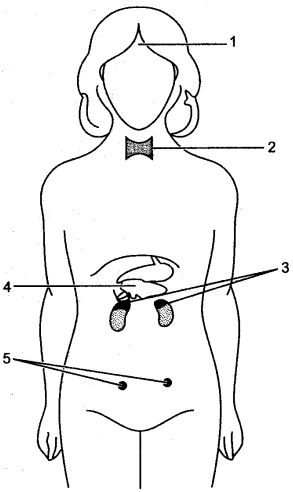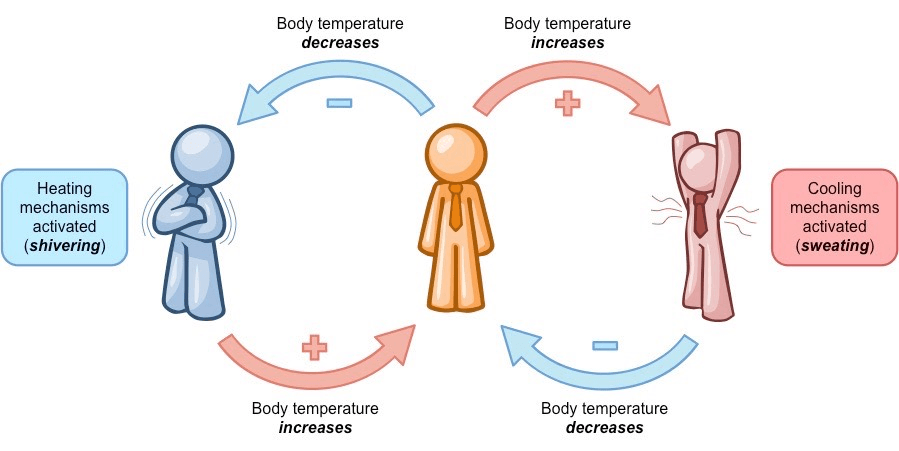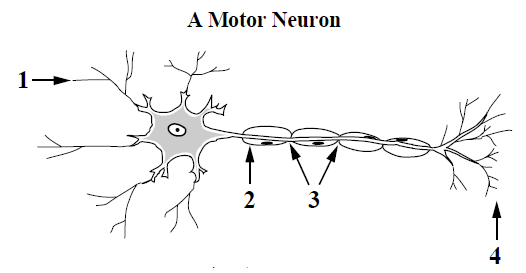What is the job of the human brain?
The brain works as the control centre for the human body.
Describe in your own words what the term disease means?
Disease can be described as a condition of the living organism or of one of its parts that prevents or impacts normal function.
What is the Endocrine system?
The endocrine system is the collection of glands that produce hormones that regulate functions such as metabolism, growth and reproduction.
What does the central nervous system consist of?
Brain and Spinal cord
Complete the diagram using word bank - Thyroid, Pancreas, Pituitary, Adrenal, Ovaries, Testes

1. Pituitary
2. Thyroid
3. Adrenal
4. Pancreas
5. Ovaries
Identify the four different lobes that make up the brain.
Frontal lobe, Parietal lobe, Temporal lobe and Occipital lobe
What are pathogens, and what is their connection to diseases?
Pathogens are a disease producing organism. Infectious diseases are caused by pathogens.
Identify 3 major glands (or organs) that are part of the Endocrine system.
Three of the following-
Pituitary, thyroid, adrenal, pancreas, ovary, testes, parathyroid
Explain how messages received are sent through neurons.
Neurons receive messages from receptors and send them as electrochemical responses to the Central Nervous System. The neuron will send the message as an electrical impulse to the synapse (gap between neurons) and neurotransmitters (chemical) deliver it to the next neuron in the path.
Draw a labelled diagram for an example of a negative feedback loop.
Example response (must include labels)

Explain the role of the brain in reflex actions.
The purpose of reflex action is to provide quick response in situations where the organism does not have enough time to think. Reflex arcs are formed in the spinal cord, although the information inputs also reach the brain. This helps the brain to record this event and remember it for future use.
Explain the difference between HIV and AIDS.
HIV (or human immunodeficiency virus) is a virus that attacks the cells that help the body fight infection, making a person more vulnerable to other illnesses. While HIV is a virus that may cause an infection, AIDS (short for acquired immunodeficiency syndrome) is a condition that occurs in badly damaged immune systems. Contracting HIV can lead to the development of AIDS.
Explain the purpose of hormones in the body (provide an example)
A hormone is a chemical substance that is produced by a specific gland that is carried through the blood to alter the activity of a target organ. An example is the hormone ADH which is produced in the pituitary gland to help the body to retain water by increasing water reabsorption by the kidneys.
What parts of the nervous system are involved in reflex actions?
The peripheral nervous system receives responses from sensors, and the messages are sent from sensory neurons to spinal cord and then back to motor neurons as part of the autonomic nervous system response.
Describe homeostasis in the body and identify the 3 key related processes we have covered in class.
Homeostasis is the stable, relatively constant internal environment maintained within the body. The body desires homeostasis for many reasons such as enzyme function, etc and some of the key regulations include temperature control, blood glucose and water levels.
State the name and explain the main functions of the three key parts of the brain.
The cerebrum performs higher functions such as interpreting touch and vision. The cerebellum receives information from parts of the brain and regulates motor movement. The brain stem controls breathing, heart rate and connects the cerebrum and cerebellum to the spinal cord.
Compare and Contrast infectious and non-infectious disease, providing an example of each.
Example response -
Infectious and non-infectious diseases are similar in that both are diseases and can be harmful or fatal to living organisms. Some significance differences are that non-infectious diseases are transmitted through genetics or lifestyle factors and are not contagious. An example would be diabetes or cancer. While infectious diseases are caused by pathogens (such as bacteria or germs) and are spread through contact. An example would be Malaria or the flu.
What is insulin and how does it impact blood glucose levels?
Insulin is a hormone produced in the pancreas and it is released to bring down blood sugar levels if they become too high. The insulin travels through the blood stream and signals receptors on cells to open to receive glucose from the bloodstream, and their absorption reduces the amount in the blood.
Identify the missing parts of the Neuron and describe their function.
Word bank - Axon, Axon Terminal, Myelin, Dendrite

1. Dendrite - receives messages
2. Myelin Sheath - fatty insulator that protects axon
3. Axon - conducting fibre through neuron
4. Axon Terminals (synapse) - transmitters from neuron
Explain how diabetes is connected to blood sugar levels, and what role insulin plays in it.
Diabetes is a condition in which blood sugar levels remain too high and unable to be managed by the body's natural insulin production - whether that be that it is not producing enough insulin or the body is immune to it. Normally insulin is produced in the pancreas to trigger the body into glucose storage so as to remove it from the bloodstream. Instead with diabetics the sugar levels are managed by diet or insulin injections.
Predict what might happen if one of the lobes of the brain were to be damaged and/or stop working. How might this impact the other lobes?
Possible response:
There are connections between the different areas of the brain, and damage to one area may result in dysfunction associated with other parts of the brain. If the frontal lobe was affected this may cause changes in behaviour, attention, emotions and also weakness to the opposite side of the body. Temporal lobe damage would possibly result in difficulty finding the correct words when talking and short-term memory issues. Damage to the Parietal lobe could cause right-left confusion, loss of sensation down the opposite side of the body, difficulty with writing and problem solving. Whereas if the Occipital lobe is impacted there would be loss of vision, difficulty processing and recognising objects and lobe seizures.
The impact on other parts of the brain will depend on what part of the brain and/or which connections to an area within the brain are damaged.
Explain how Malaria can effect water levels in the body, and predict the impact on homeostasis in the body in your response.
Points to include -
- Dehydration from diarrhoea
- Water levels below optimum
- Messages sent to kidney to retain water in blood
- Water retained as long as possible, urine concentrated until condition treated
Explain the role of the hypothalamus in terms of the endocrine system and homeostasis.
The hypothalamus is the portion of the brain that maintains the body’s internal balance, which is referred to as homeostasis. The hypothalamus is the link between the endocrine and nervous systems. It receives messages from the nervous system and produces hormones to send messages to the body, in particular the pituitary gland, to help manage functions such as water levels and temperature.
Predict what would happen if the brain were to suffer a blunt force trauma. How would this impact the Nervous System?
It would be expected that the impact of a blunt force brain injury would slow or even stop the brain receiving and processing messages from the spinal cord. These delayed messages will also delay responses from the body. The messages that are normally sent to the hypothalamus in the brain to help regulate body functions will also potentially be impaired, preventing system regulation.
Predict what would happen if the human body was exposed to extremely cold temperatures and then immediately exposed to soaring hot temperatures. Justify your response.
Possible response -
The body would attempt to regulate the internal temperature through the process of thermoregulation (homeostasis). However, being exposed to extreme temperature differences in such a short time would mean the body wouldn't have the time to react, leading to the core temperature rising/plummeting beyond the optimal level. Going below the optimum level could result in hypothermia, frostbit, etc., whereas rising above the optimum level could result in irreversible brain damage, heatstroke, etc.